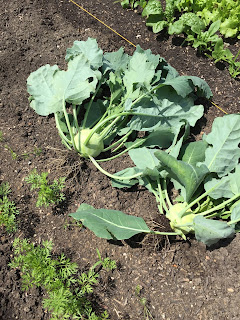First, cucumbers are fruits and not vegetables. Fruits are the part of the plant that come from the flowers that are set by the plant. Also, fruits contains seeds. Vegetables, on the other hand, are the other edible part of the plant. This includes the root and flower. Examples of fruits are tomatoes, zucchini, squash, peas, beans, peppers, apples and corn. Examples of vegetables are carrots, broccoli, cauliflower, potato, onion, lettuce, swiss chard and spinach.
So, what is the deal with so many flowers and so little fruit on my cucumbers? Cucumbers create separate male and female flowers on the plant in about equal numbers. Interestingly, tomato plants create flowers that have male and female parts in ONE flower. Knowing this fact, with cucumbers creating male and female flowers, I should only expect roughly 50% of the flowers to create fruit. Another factor that brings the percentage down even further is that because there are male and female flowers, we need to rely on local bees and humming birds to pollinate the female flowers. Wind won't work for cucumbers because the pollen in the male flower is heavy and sticky and hard to move from male to female flowers. Bees are not always the best and most timely pollinators either. If it is rainy or too hot the bees won't be out to pollinate the female flowers before the flowers fall off the plant. The male and female flowers only stay on the plant for a very short time. Insecticides might be another reason why bees don't show up in your garden. Mother Nature is tough enough without us causing problems by applying insecticides to our garden and lawn. As you can see, relying on local bees to pollinate your cucumber female flowers also lowers the percent of possible cucumbers.
| Cucumber fruit with dead female flower on the end. Male flowers in the background ready for the bees. |
One trip by a bee is typically not enough to allow for a full fruit to be set. To get a really nice fruit you need to have several bees pollinating one female flower. The lack of multiple trips by a bee to one female flower is a reason why a cucumber might not develop or it might develop into an odd shape. Poorly pollinated female flowers can also lead to bitter tasting cucumbers. Here are some examples of poorly pollinated female flowers.
If you grow cucumbers, you now know how you can tell the difference between male and female flowers, why you may have crazy looking cucumbers, and why some may taste different than others. Most importantly, you know why you have so many flowers and so little fruit.















































